 Petzlover
Petzlover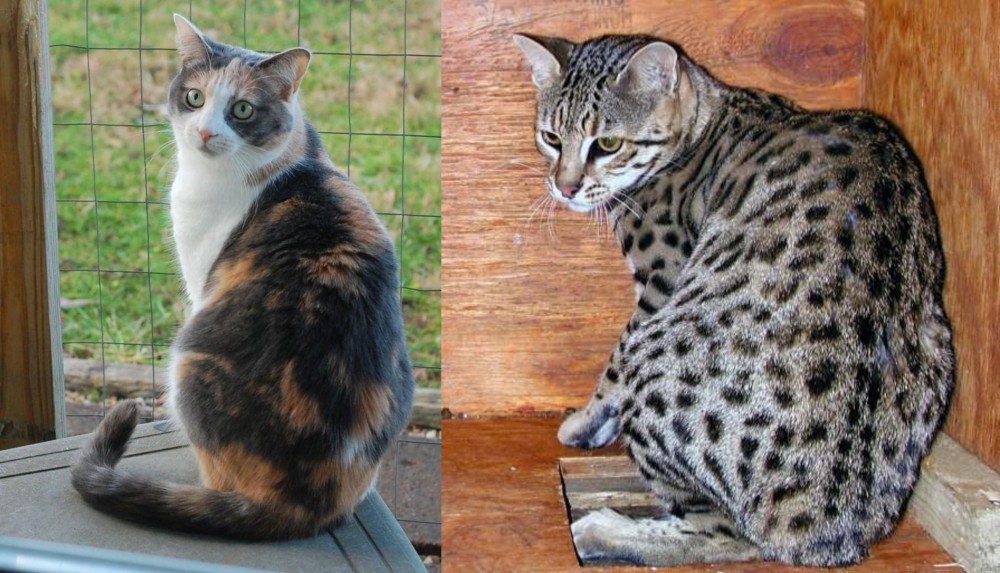 Dilute Calico is originated from Egypt but Safari is originated from United States. Both Dilute Calico and Safari are having almost same weight. Both Dilute Calico and Safari has same life span. Both Dilute Calico and Safari has same litter size. Dilute Calico requires Moderate Maintenance. But Safari requires Low Maintenance
Dilute Calico is originated from Egypt but Safari is originated from United States. Both Dilute Calico and Safari are having almost same weight. Both Dilute Calico and Safari has same life span. Both Dilute Calico and Safari has same litter size. Dilute Calico requires Moderate Maintenance. But Safari requires Low Maintenance
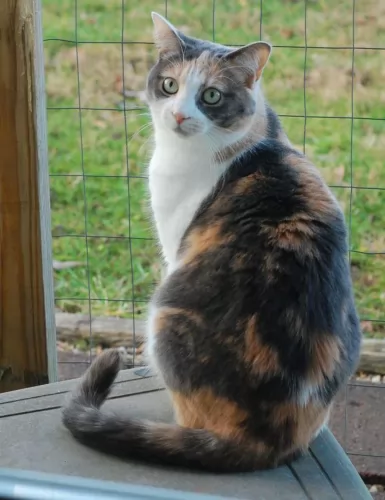 The Calico isn’t a breed of cat but is describing a color and pattern of the cat. Many breeds of cats can be calico, and ‘Dilute Calico’ simply means that the color of the cat is less intense.
The Calico isn’t a breed of cat but is describing a color and pattern of the cat. Many breeds of cats can be calico, and ‘Dilute Calico’ simply means that the color of the cat is less intense.
An example of this would be cream being the dilute shade of red, almost like strawberry blonde. People interested in the origins of the cat trace its history back to the trade routes in Northern Africa and Europe, and more specifically to the port cities along the Mediterranean Sea.
A Calico cat is described as having 3 colors - white, black, and red and Dilute Calico cats have ‘toned down’ shades of these 3 colors.
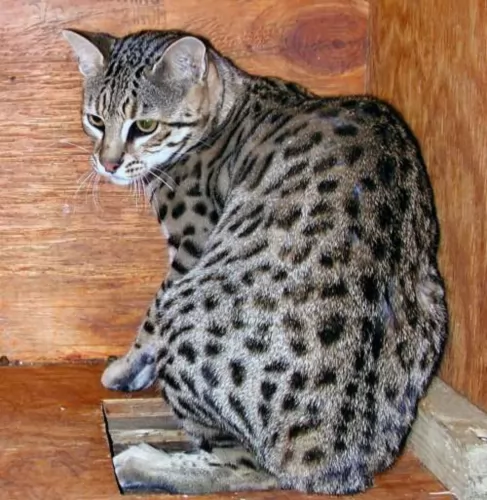 The Safari Cat, hailing from the USA, is one of the rarest breeds of cats. There are only about 70 of these cats registered at the International Cat Association.
The Safari Cat, hailing from the USA, is one of the rarest breeds of cats. There are only about 70 of these cats registered at the International Cat Association.
The Safari cat is a mix of a moggy and Geoffroy's cat. At first, the cat was used for research purposes by Washington State University but then cat breeders took over the development of the breed.
The name ‘Safari’ was chosen because of its wild look.
 These are beautiful cats that can essentially have any size and shape and can weigh between 3 and 6kg. Their coat too can be in different colors and patterns and these don’t have any effect on the cat’s persoality.
These are beautiful cats that can essentially have any size and shape and can weigh between 3 and 6kg. Their coat too can be in different colors and patterns and these don’t have any effect on the cat’s persoality.
Your Dilute Calico can have a short- or long-haired coat. Also, because the dilute calico coloring isn’t linked to any particular cat breed, these cats can be any size or shape really.
They are also nearly always female. Remember that while genes do have an effect on how your Dilute Calico looks and behaves, socialization plays a big part, and where possible, to get your cat from a reputable breeder.
Because calico cats are a coat-color and not a breed, you can find long hair dilute calico cats. The personality of the Dilute Calico is described as colorful as well as they’re fun-loving, independent, spunky cats that are sweet and loving too.
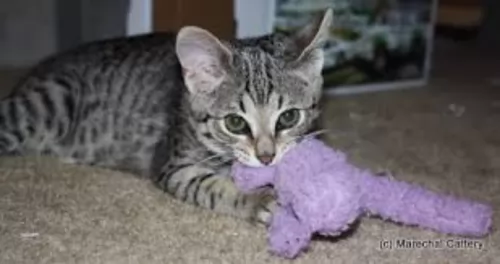 The hybrid Safari cat is a medium to large-sized cat that at first weighed in the region of 15kg, but the cat now weighs roughly 11kg.
The hybrid Safari cat is a medium to large-sized cat that at first weighed in the region of 15kg, but the cat now weighs roughly 11kg.
Its body is much like that of the wild parent, the Geoffroy – muscular and compact. The ears aren’t particularly large and are smallish, rounded ears with a fairly broad head.
It has a typical wild cat look and is a spotted or rosetted cat breed. Below the spots, the coat is a silvery grey shade.
The coat which is short actually comes in a variety of colors that come from both cat breeds. The eyes of this cat are either yellow or green. The Safari cat certainly has a wild cat appearance, because of the cross-breeding. This is a rare cat and because of this, there is no breed standard for it.
They can live to be between 17 and 20 years of age.
Even though one of the parent breeds is a wild cat, the Safari cat is described as an easy-going cat that can make a good pet.
The cat is very intelligent and playful and will enjoy swimming and climbing. It is for this purpose that he needs to have quite a large outside enclosure with a pool of sorts so that he can paddle.
There isn’t much information on their interaction with children and other pets in the home. While they are quite likely to make good pets where there are children, there would have to be supervision where there are small children. During play, these cats can bit. It would be extremely important to teach children to respect any animal and to be gentle and kind to them.
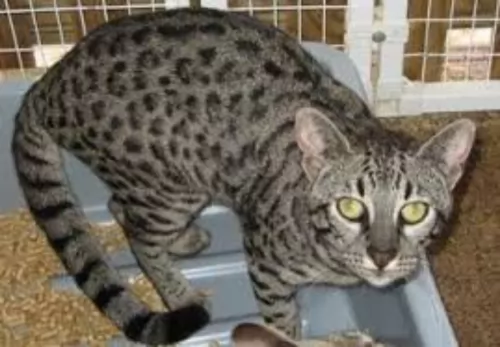 As a hybrid cat, your Safari is interesting alright, but unfortunately, you can’t ever be 100% sure of a hybrid cat. It needs careful consideration before you bring one into your home.
As a hybrid cat, your Safari is interesting alright, but unfortunately, you can’t ever be 100% sure of a hybrid cat. It needs careful consideration before you bring one into your home.
Apart from coming into the home from time to time, hybrid cats need an outside enclosure too that is securely fenced and gated and with a roof.
You made a decision to buy a cat with a wild side. It may live up to all your expectations but it may not either.
When you do research you find that the biggest number of behavioral complaints from owners of hybrid cats are about aggression issues and the refusal to use a litter box when indoors.
There is still a raging debate going on as to whether hybrids make suitable pets, but when you bring any animal into your home, as a responsible adult it is your job to provide well for it to ensure its happiness.
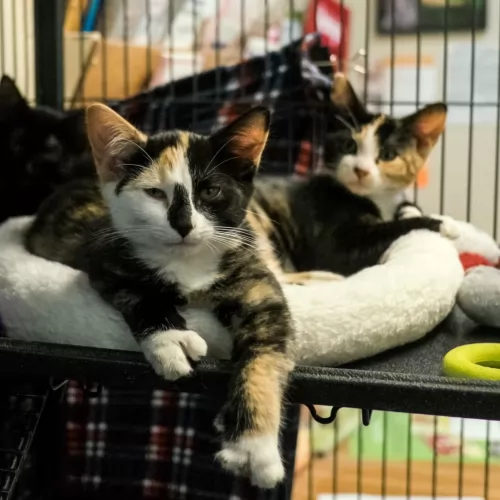 As already mentioned, the Dilute Calico isn't a specific breed but rather a color. The calico can be any breed. The average lifespan of any cat is 12-16 years. The males are far rarer than the females and they live shorter lives.
As already mentioned, the Dilute Calico isn't a specific breed but rather a color. The calico can be any breed. The average lifespan of any cat is 12-16 years. The males are far rarer than the females and they live shorter lives.
Cancer is a terrible disease in cats and dogs and it is where cells grow uncontrollably, spreading to all areas of the body. For any sign of illness in your Dilute Calico, get him to the vet.
Make sure your cat is vaccinated against the deadly cat diseases there are such as Feline Immunodeficiency Virus (FIV).
Both males and females can develop lower urinary inflammation, which is also called Feline Lower Urinary Tract Disease (FLUTD). You’ll notice your pet straining to urinate. It’s time to get your pets to the vet with this terrible illness.
 The Safari cat isn’t a particularly well-known breed so there isn’t much information on their health. They can suffer from the same illnesses as non-hybrid domestic cats.
The Safari cat isn’t a particularly well-known breed so there isn’t much information on their health. They can suffer from the same illnesses as non-hybrid domestic cats.
Certain hybrid breeds, such as the Safari, can sometimes have issues with reproduction as some cats are infertile. Domestic cats and wild cats have a different number of chromosomes and this results in reproductive problems, and stillbirths are quite common.
 Prepare for your cat – have food dish, water bowl, litter box, cat food, brush, climbing tree, scratching post, cat toys, and cat bed to welcome your pet.
Prepare for your cat – have food dish, water bowl, litter box, cat food, brush, climbing tree, scratching post, cat toys, and cat bed to welcome your pet.
When it comes to commercially manufactured cat food, there are many excellent ones on the market and you can choose from dry and wet cat food. If in any doubt about what is best for your cat, speak to your vet. Your cat is a carnivore and will need food that pays special attention to meat. A kitten will require 4 small bowls of food a day and by one year of age your cat can be receiving 2 smaller meals a day. Provide cool, fresh water around the clock..
Brush your Dilute Calico gently once a week. Some of the longer-haired Dilute Calicos will require brushing twice a week. At this grooming time, check that the eyes are nice and clear, free of discharge, check that the inside of the ears are free of wax and dirt build-up and check inside the mouth that there aren’t any troublesome teeth.
Whether your cat is an indoor cat or he goes outside occasionally, check for ticks and fleas and get him to the vet to check for internal parasites. Your cat will need to be dewormed and to receive all his cat vaccines to avoid some of the deadly cat diseases there are.
If your cat does go outside, make sure he has a cat collar and an ID tag.
Keep the litter box hygienically clean as cats won’t use a messy litter box. You can buy small scoops and rakes from the pet shop and rake up his droppings throughout the day.
Always have your cat neutered or spayed as there are way too many unwanted kittens in the world. Having them ‘fixed’ reduces lots of illnesses such as urinary inflammation.
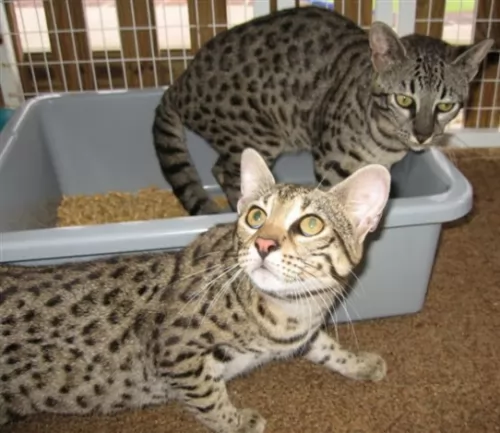 It is recommended that you brush this cat each week. He isn’t a big shedder but the brushing once a week keeps the fur in good condition, removing loose hairs and dust.
It is recommended that you brush this cat each week. He isn’t a big shedder but the brushing once a week keeps the fur in good condition, removing loose hairs and dust.
A high protein diet is imperative. Cats are carnivores and a meat diet is imperative. You can speak to your vet or a cat expert about feeding your Safari cat. Certainly, they need to be fed high-quality cat food. These foods are available in wet and dry form.
He will definitely need some raw meat. Make sure you understand the ingredients in some low- quality cat foods as corn for cats can be a problem for them, hard to digest and it could cause intestinal problems.